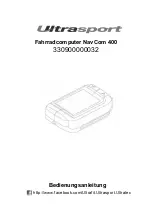
82
Reference
● ● ● ● ● ● ● ● ● ● ● ● ● ● ● ● ● ● ● ● ● ● ● ● ● ● ● ● ● ● ● ● ● ● ● ● ● ● ● ● ● ● ●
Custom Voice Creating
Full Editing
■
Element selection
Each PSR-9000 voice can have up to eight separate “elements.” These elements are the basic sonic building blocks
of the sound — with each element having its own waveform, envelope generator settings, and other parameters.
■
Parameters
●
VOICE
When editing in the E1:WAVEFORM,
E2:EG, E3:FILTER, or E4:LFO pages you
can select the element to be edited, set
the maximum number of elements to be
used by the voice, and mute individual
elements via the ELEMENT page
accessed by this button.
Sets the element to be
edited when you return
to the editing pages.
Sets the maximum
number of elements to
be used by the voice.
These parameters individually turn the corre-
sponding elements ON or OFF. The circular
indicators next to the element numbers in the
upper section of the display indicate the mute
status for each element.
You can select the desired
element by pressing these
buttons.
Select the desired menu.
Can be used during edit-
ing to compare the sound
of the original voice with
the edited voice.
Sets the overall volume of
the current edited voice.
The CURVE LCD button provides a
choice of four keyboard initial touch sen-
sitivity curves, and the SENS LCD but-
tons adjust initial touch sensitivity.
Selects the desired scale (pitch) curve
to be used by the current edited voice
for the PSR-9000 keyboard.
Sets the amount of Filter, Amplitude
and LFO modulation types (PMOD,
FMOD, AMOD) applied via the
MODULATION wheel and via key-
board After Touch response.
See page 86 for details about LFO.
80
















































